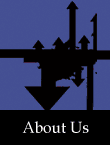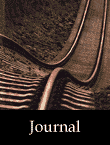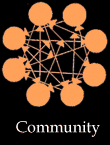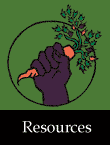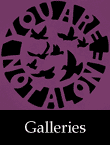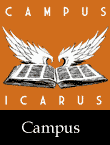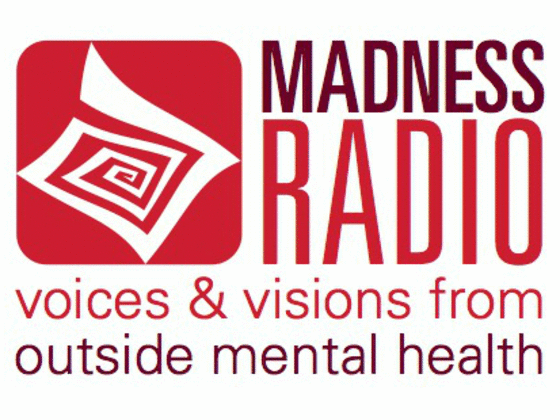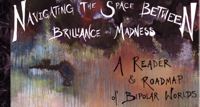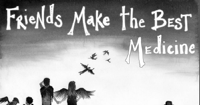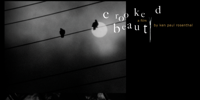Gallatin/NYU Campus Icarus - A Student Organizer's Journal
Submitted by nickb on Fri, 08/15/2008 - 5:12pmIcarus on Campus: Charting the Course
Spring 2008 by Annie Robinson
Setting Out
In December, a couple months and a winter break away from when my semester as an Icarus Intern actually began, a brainstorming meeting with our club’s academic advisor Brad Lewis yielded the following concepts. We discussed what “creating a culture” involves; in some ways that would be our mission. The previous semesters in which The Icarus Project slowly seeped into NYU’s student life led to the stage we found ourselves in this past winter. It was time to self-define, to clearly sort out what Campus Icarus meant, what kind of Icarus culture NYU’s community needed most and for which it would make space. We asked ourselves: What are the elements of a culture? What comes first? We needed rituals, which took the form of events and activities; roles, for division of work; communication, centered online in the form of a website and/or blog, virtual calendar, Facebook group, listserv, and so forth; and finally artifacts, the tangible documents offering evidence of our existence and enabling us to spread the word about who we are and what we do. We initially wanted to tackle “Micro” and “Macro” level matters. “Micro” included all of our Gallatin and NYU projects: namely, the club. The “Macro” stretched beyond our local efforts and involved marketing Campus Icarus to other college campuses, developing a website and strategies that would speak on a national level. Our initial ambitions were somewhat overzealous, and we decided to narrow our scope from building a national infrastructure to working primarily on the local, grassroots NYU chapter of Campus Icarus (and accomplished a few “macro” goals as well). It proved much more rewarding to put our energy into the local works, too, which yielded more immediate results and reactions than the ‘big picture’ efforts could. Developing a website for a National Campus Icarus proved particularly overwhelming: we could only speak from our own experiences, our current work, and struggled in trying to find language that could represent any/every college in the country. Furthermore, it was difficult to navigate between our Campus Icarus work and that of The Icarus Project (see below for further discussion regarding the bonds and divergences between the two). Ultimately we realized that focusing on Campus Icarus at Gallatin could still serve the mission to reach campuses elsewhere: we could serve as an example, offer our insights into the process and disperse them for others inspired to create their own Icarus college culture. We finalized a work that had been in progress, “Breaking Down The Walls Around Madness and Mental Illness: A Guide To Organizing Campus Icarus Groups,” to be made available on The Icarus Project’s website and to distribute to interested students from other colleges. Part of accepting the limitations of what would be feasible this semester required us to examine our relationship to The Icarus Project. Though inspired by The Icarus Project, we operate independently from it. The need for a campus offshoot of the project also necessitates a narrowed focus on the student’s encounter with mental health, which differs in several ways from the unaffiliated adult population to whom The Icarus Project attends. Being in college inherently situates one in the mainstream, however resistant one may be to it. This presented us with a challenge when trying to create an Icarus community at NYU, for The Icarus Project fundamentally distances itself from the mainstream. But we do not see this as an insurmountable issue, and have found others who have helped us create a bridge between the mainstream and radical worlds. Working from within a more traditional context, we have realized how having one foot in the mainstream actually enables us to create a successful and complementary alternative to the existing mental health services available to college students. How do we do this? We take a positive approach to our activism. We work with, not against, existing trends. We raise questions; we don’t dictate.
Shaping Safe Space
Instead of limiting ourselves to the binary services of support groups and programming, we want to offer an innovative third option: this aspiration has thus far seemed to translate into what we call a “support network”. While Campus Icarus originally tried to host educational events and negotiate with the NYU counseling center for the authority to run support groups, this year we have fused the most meaningful aspects of those two ambitions by holding “gatherings” in which we discuss relevant issues of import in a supportive, nurturing, safe environment. Using our NYU club listserv, a Campus Icarus blog we set up on NYU web space, and an Icarus Facebook network, we sent invitations and information for these gatherings to the members of the community who had shown interest in our group. Our first “meet-up” was at a small exhibit at a Manhattan library for The Lives They Left Behind, a recently published book on an old New York State mental institution. It was on January 25th, shortly after we returned from winter break, and just three people showed up. Our first ‘official’ meeting (which was also our last), which did not take the form of the meet-up/gatherings held thereafter, was also in the early days of the semester and likewise yielded a very poor turnout. The timing (during the transition back to school and hectic registration period) or the structure of these events may be responsible for their failure. As we loosened our meetings’ format and the semester picked up a rhythm, we received greater response. In early February, we held an informal potluck in the student lounge space in NYU’s campus center on a Sunday evening from 6:00-8:30pm. With the ten or so people present we attempted a peer education exercise, and discussed the potential of similar exercises (which we received from a woman in Ann Arbor and the University of Michigan who has put together a series of mental health-based peer ed activities). We tried an “icebreaker” which involved everyone having a diagnosis and its designated symptoms taped to their back, and then walking around asking others yes or no questions to figure out what they “had”. Afterwards we all concluded that the people who had a background in psychology were at an obvious advantage, making it almost too easy for them and too difficult for others. We looked at some of the other activities too, and while we found the idea of hosting peer education workshops intriguing, finding appropriate activities and then enacting their application seemed less appealing, and struck most as requiring a lot of time with a high risk of wasted efforts, i.e.: uninterested students. These ideas resurfaced later in the month when I attended an LGBT SafeZone training, which is in essence the peer education workshop the LGBT office offers several times a year. Our next two events epitomize the “support network gathering” format we found to be most successful. The first was a rendezvous held at one of our apartments on a Sunday evening from 7:00-10:00 PM where we shared conversation over dinner and crafting (collages, drawing…we provided a range of art materials for people to use as desired). The ambiance was really key to the comfortable and safe atmosphere we aimed to create – candles, dim lighting, music, the homey feel of an apartment, sitting around the room on pillows on the floor, a bed, a few chairs. The whole night was absent of any formal meeting components: no announcements, roll recording, or agenda items. We responded to questions from those who want to know more about Icarus, passed along information via one-on-on interactions. I came equipped with my camera to document the event, which we consider essential for artifact accumulation during Campus Icarus’s cultural development. Mere days later, on a Wednesday evening from 6:30-9:00 PM, we held another event (it was really good to hold these close together, as the people who could not make one tried to make the other, and the people who enjoyed the first tried to come to the second). In the television room of an NYU dorm (a terribly unattractive space that we tried to warm up with holiday lights and colorful throws over the sterile couches), we ordered dim sum and screened the film Short-Bus. Conversation followed the movie, for which I assembled some themes/topics/quotations/questions to help help build connections between the movie’s sex club setting and sexual fetishism subjects to Icarus: ideas such as identity, emotional confinement, community and safe-spaces, the relation between “the gifted and the challenged”. One achieved effect of this event was to draw connections between Icarus and the larger world: many of the themes we touch upon manifest throughout society for many individuals, whether they identify as dealing with mental health issues or not. I believe it fosters a sense of relatedness that is central to combating alienation and isolation. Overall, the event had an impressive turnout, stimulated conversation and a great response afterwards from people interested in upcoming events. Despite the less-than-optimal venue, it was another great success. The Tuesday evening (March 25th) when NYU resumed after spring break, we held our first event in Gallatin’s renovated space, in the student lounge. We planned on screening a DVD we ordered at the beginning of the semester, a Frontline documentary that aired in January about children and psychiatric medication. We did not think to test the space’s equipment (specifically the DVD player and projector screen) prior to the 7:00 PM start, which proved regrettable. Unable to get the system to work, we resorted to using a computer in the space, and quote fortunately (because the computer then would not play the DVD!) the full-length film was available on PBS’s website. It turned out all right, but the technical kinks were anxiety producing and would have been preventable with greater forethought. Worrying about how much money we “blindly” spent before being allocated a budget, we did not provide dinner but did bring snacks. A smaller crowd turned out this night than before break, but it felt good-sized for the subsequent discussion. The documentary itself was very worthwhile as a barometer for the views regarding medication and children as portrayed in the mainstream media. We had a fruitful conversation, too, which revolved around personal accounts (such as my own) of encounters with meds as children and larger social/political/bio-medical issues. As often is the case in vibrant conversations, we generated a lot more questions than answers. Here are some examples:
- Does it make sense to medicate when a person still doesn’t have definitive diagnosis criteria?
- How does this topic differ from the medication ethics topic?
- What messages are given to/received by prescribing these kids psych meds?
- What social issues underlie the diagnosis of childhood mental disorders?
- Are parents the real problem? Are doctors?
- If it’s “hard for kids to make use of therapy” because of their developmental stage, how does it follow that they are at an appropriate stage for the intense drug therapies they’re given?
- Why do parents who claim to not support medicating children medicate their children anyway? What does this scenario indicate about the doctor/patient relationship in our culture?
Collaborating
Another really successful and satisfying event was a Holistic Health Fair on April 16th, for which we collaborated with Gallatin’s Consciousness Club. We communicated largely via email for the planning, meeting with the main organizer from Consciousness just once prior to the event. The evening was a total hit. I chalk part of the success up to how smoothly the various elements were delegated amongst Consciousness and Icarus members: truly reflective of a holistic, integrative spirit. We brought teas, craft supplies (including our ongoing mural and collage projects), Skill Share sheets (something we began last fall, which involves people recording ways they deal with stress/depression/ etc. that then others can try out for themselves), and informational Icarus materials. It felt incredibly significant to represent mental health as a component that resonates in all areas of wellbeing, and to provide the voice for mental health in a chorus of like-minded alternative health advocates. It was a great opportunity to generate involvement in our club and reach out to those interested in future events.
Spreading the Seeds (at Home and Beyond)
I believe it is hugely important to take any opportunity to spread the word on campus about Icarus. We represented Campus Icarus at Gallatin’s club fair this January, though the weather did not permit a sizable turnout. Often we encounter feedback from people indicating they had no idea something like Icarus existed at NYU, or we come across students involved or interested in topics pertaining to our work. One such example this semester was when we heard about an event hosted by LUCHA, NYU’s Latino/a club, entitled “NYU: THE SILENT KILLER?” which approximately 30-35 people attended. It was unfortunately held on the night of our Shortbus screening, but two of us were able to drop in for the beginning and introduce ourselves and relay a bit about Icarus. We also obtained notes afterwards about what went on during the event. It consisted of a slideshow with facts about suicide interwoven with questions and comments. It would have been incredibly profitable for us to have actually collaborated with LUCHA on this, but hopefully we made a connection that will generate future collaboration. One of the “Macro” initiatives that actualized this semester was Campus Icarus’ participation in a conference held at Western Washington University in Washington State. The Consortium for Innovative Education and Learning (CIEL) sponsored the gathering, which they titled “Festival of Scholarship”. Three of us flew across the country for the long weekend in April to give a forty-five minute presentation on Campus Icarus: Brad, me, and an original NYU Icarus intern, Liz Brackbill. Our panel was unfortunately titled “The Flight of Campus Icarus,” which left much to be interpreted by attendees who had several co-occuring panels to choose between. Fortunately, we got a respectable-sized crowd anyway, perhaps 20-25 people. We dispersed photocopies of the recently completed Campus Icarus Student Guide, information about the original Icarus Project, a brochure on mental health recovery, and passed around Friends Make The Best Medicine and Navigating the Space Between Brilliance and Madness, two Icarus Project publications. Brad opened our presentation with a history of Mad Pride, a brief discussion of what mental health recovery looks like at present, and an introduction to The Icarus Project. Liz took the reins next, giving an account of her experience bringing The Icarus Project to NYU, a vigorous and frustrating battle to find where and how it fit on campus. I picked up where she left off, describing my discovery of The Icarus Project and increasing involvement in the development of Campus Icarus. I also shared my personal mental health history, which I felt was incredibly important for me individually and as it fits into the foundation of The Icarus Project – which was founded from individuals sharing personal experiences to effect social change. I have also always been incredibly open with my stories, but unsure of how to use them constructively. This forum proved to be the sort of situation I had been seeking. We used up more time than we were allotted, responding to the many comments and questions our presentation inspired. The connection we made with the most potential for future Campus Icarus growth was with a pair of professors from Evergreen College. On the downside, the conference itself was less generative, constructive, or inspiring than we had hoped. The significant range in project topic and format, some of which were just class presentations of a semester’s local anthropological research, limited the number of potential ally associations. But the process of readying ourselves for a presentation was immeasurably constructive. Furthermore, we left with our minds churning about what our ideal conference would look like, and inspired to put it together next year at NYU.
Culmination
Starting in February, I partnered with playwright Sabrina Chapadjiev, who edited a book called Live Through This: On Creativity and Self-Destruction which was published in April. The book featured all sorts of female artists who contributed their stories of struggles with issues relating to self-destruction. These compelling personal narratives reflect how self-destructive energies can be channeled into creativity. One contributing artist was Bonfire Madigan Shive, cellist dynamo and mental health activist who is a founding collective member of The Icarus Project. She put Sabrina in touch with Brad, who then connected us. Sabrina was booking college engagements on the themes surrounding madness and art, and we decided to organize two events at NYU: a book panel (a presentation by Sabrina and contributing authors Madigan and gender theorist/author Kate Bornstein) and a “Rage to Page” workshop led by Sabrina to explore ways to use art, writing in particular, to deal with self-destructive tendencies. I was thrilled by the chance to work on this project, which consisted of some of my main focuses as an individual, a mental health and gender activist/advocate, an artist, and a student. I feel that the issues at hand are too often silenced, shunned, and shamed. I was seized with passion the opportunity to give them form, bring together a collective of voices, open the discussion up in the community, and offer access to essential tools and resources. Over the following three months, we put together and executed two phenomenal events. They involved quite a few stages and a lot of nuts and bolts tasks that put me in contact with departments and people throughout NYU, equipping me with experience that will come in handy for future events and endeavors of a similar nature. I reached out to the women-identified LGBT social networking group, Campgrl, the NYU NOW chapter, the Center for the Study of Gender and Sexuality, and the Community Learning Initiative at Gallatin (CLI). The latter approved my request for a $200 grant, though the application I submitted for PAWS (Programs & Activities Without Substances) funding was declined because the event did not occur during a time when students traditionally interact with alcohol and other drugs (though they were supportive of the event’s aims!). The Center for the Study of Gender and Sexuality also allotted us $200 for speaker fees. Further funding came from our Gallatin Student Club budget, for which we received $1065, about half of our strategically over-estimated request. Brad, at whose apartment the book panel was held, also used money from the Broome Street Residence Activities account for the food, dessert, and drinks provided at the event. We borrowed a projector and screen from Gallatin for the visual presentation Kate put together, and set it up at Brad’s for the first (and free) event, Tuesday, April 22nd, 7:30-9:30. After about 20-30 minutes of mingling, the presentations began with Sabrina, who read from her introduction to the book and shared some of the writing by artists who were not present. Kate then presented an absorbing, multi-faceted visual and oral production documenting her journey through issues of gender identity, religious/spiritual investigation, self-injury, and strategies for survival. Next, Madigan graced us with several stunning cello compositions, and read aloud the piece she put in the book. We allotted some time for questions and comments, though this section was the trickiest of the night, due to the size of the group and the very personal nature of some of the responses. I felt it was important to offer space for audience reactions, but perhaps we should have limited it to a shorter period and encouraged people to bring certain things to the artists individually when we broke up for more socializing time. Copies of the book and other materials from the authors were available for purchase, and the event also was an opportunity to advertise for other upcoming events for Campus Icarus, Sabrina, and Madigan. The evening of reading, discussion, and music surpassed my hopes. People from a wide range of communities came together to form a unique, organic, temporary community fostered in safe space with intriguing topics to explore as both entertainment and opportunities for participation. New Yorkers involved in The Icarus Project attended, friends of Madigan’s, Kate’s, and Sabrina’s came from their distinctive circles, Broome Street residents heard about it from Brad, Campus Icarus members showed up, as did friends and even family (my mom, for one) to whom the word had been spread. Extending into all these networks really made for the truly special, stimulated crowd of 50+ individuals whom we were so lucky to host. Two weeks later, from 6:30-8:00 on Friday, May 2nd the “Rage to Page” workshop proved to be another hit. Its description was as follows:
There is no pride in self-destruction! Nobody wants to talk about it in a real way- why women actually cut, starve or drug themselves, what it feels like, and why it is so socially acceptable to self-destruct. Based on the essays of her newest collection, "Live Through This- The Art of Self-Destruction", Editor/Playwright Sabrina Chapadjiev will be leading a workshop on the themes that surround self-destruction: shame, power, and control. Come explore ways to channel self-destructive behaviors into creative ones. Bring your journal, pencil, and creative mind!
It drew a smaller crowd, expectedly (it was the last day of classes at NYU), but good-sized at around 15. Some non-students came too, which was exciting, hearing about it at the first event. We sat around a long table in the student lounge in Gallatin’s new space. Markers, paper, pens, and food was provided. The series of exercises, written and drawn, Sabrina led us through were short and sweet, meant to get us into a more natural uninhibited creative flow. We made a version of a “mad map” which Madigan provided an example of in the book, drew an “emotional self-portrait”, listed “Ten Things I’d Never Tell My Father” and what “I Will Teach My Daughter”. We had the opportunity to share or not share our writing, and if sharing, to claim it or leave it anonymous. Sabrina also offered continual advice about how to constructively tap into creative juices when dealing with challenging emotions, such as how writing it down can be viewed as an act of exorcism, that when stuck, it helps to write around what you feel you cannot say, that sometimes the simplest words are the most powerful, and that therapeutic art sometimes needs translation before being presented. We concluded after an hour and a half, though I could have kept going! It felt great to be able to take away tools to use on my own. Everyone I spoke to after we wrapped up seemed extremely impressed and satisfied with the experience and interested in future Campus Icarus and/or Sabrina-led events. As far as future projects go, Sabrina and I are in talks to arrange alternative workshops at NYU next year. I realized, working with Sabrina this semester, how central the gender dimension, the themes surrounding self-destruction, and the incorporation of creative elements are in my personal involvement in mental health advocacy.
I subsequently would recommend to anyone involved in Campus Icarus at NYU or elsewhere to pursue your particular passions; it makes such a difference to your level of commitment and degree of involvement to be engaged in something that you really care about yourself. As Brad put it, “Your compass should be what most interests you.” Make sure you can identify what you are getting out of the work you’re doing, what you are contributing to the group/mission, as well as what other leaders’ experiences are and how the community is responding. It can be tricky to divide the labor and to keep up healthy communication among individuals involved in campus organizing. But continually asking these questions and checking in with yourself and others can help enormously.

